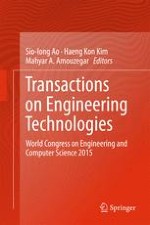
2017 | OriginalPaper | Buchkapitel
1. Estimate the Impact of Different Heat Capacity Approximation Methods on the Numerical Results During Computer Simulation of Solidification
verfasst von : Robert Dyja, Elzbieta Gawronska, Andrzej Grosser, Piotr Jeruszka, Norbert Sczygiol
Erschienen in: Transactions on Engineering Technologies
Verlag: Springer Singapore
Aktivieren Sie unsere intelligente Suche, um passende Fachinhalte oder Patente zu finden.
Wählen Sie Textabschnitte aus um mit Künstlicher Intelligenz passenden Patente zu finden. powered by
Markieren Sie Textabschnitte, um KI-gestützt weitere passende Inhalte zu finden. powered by